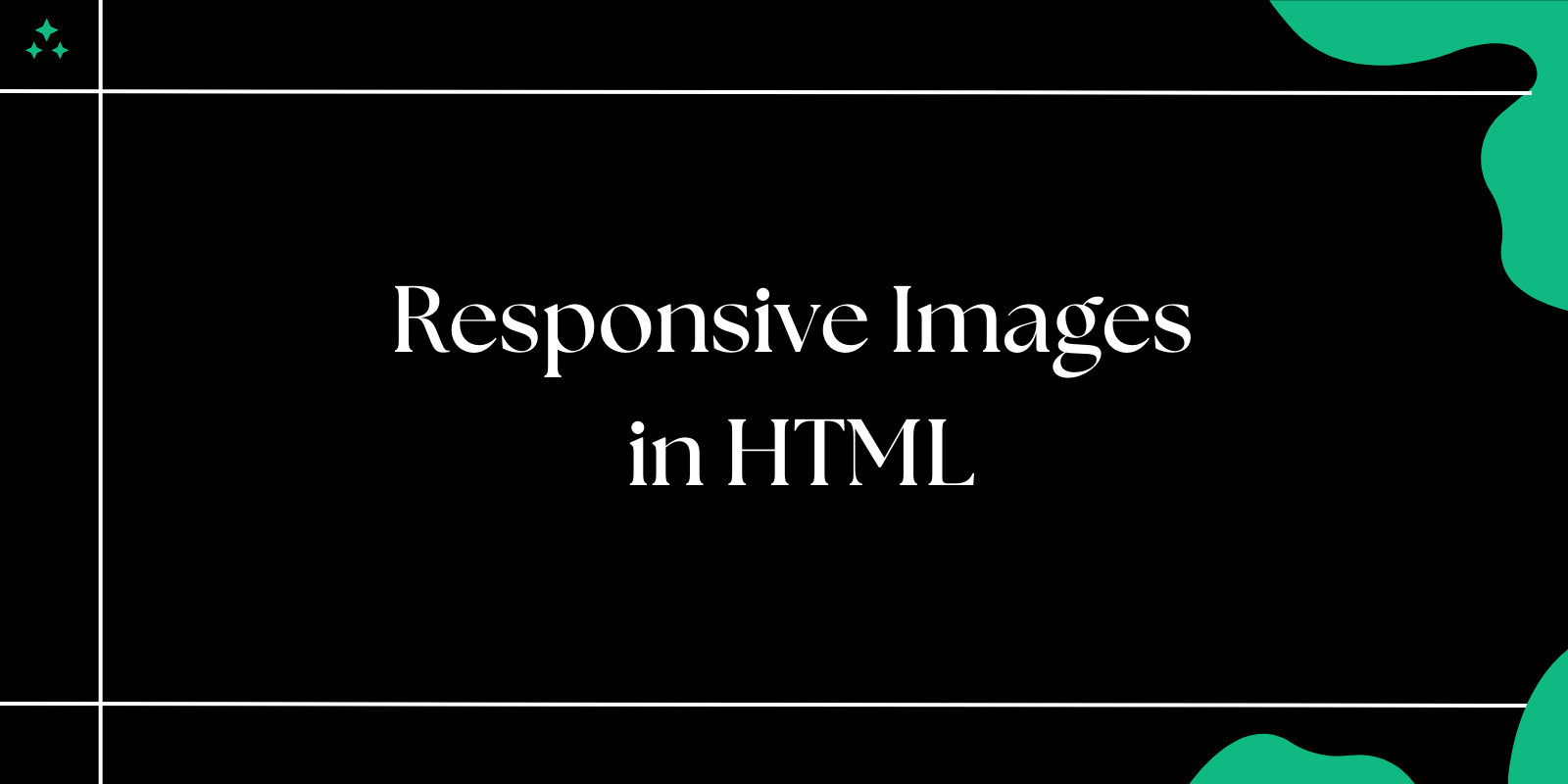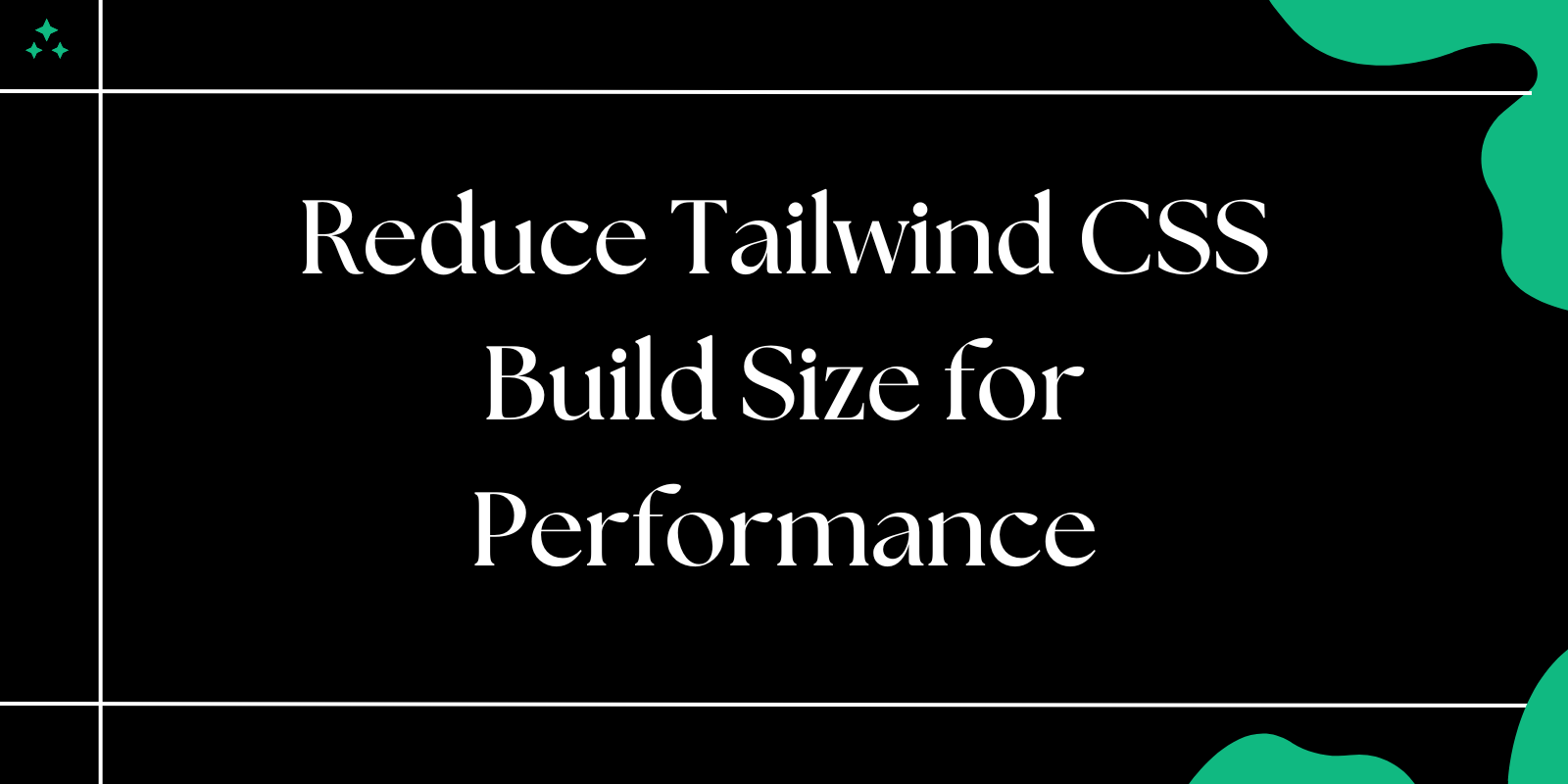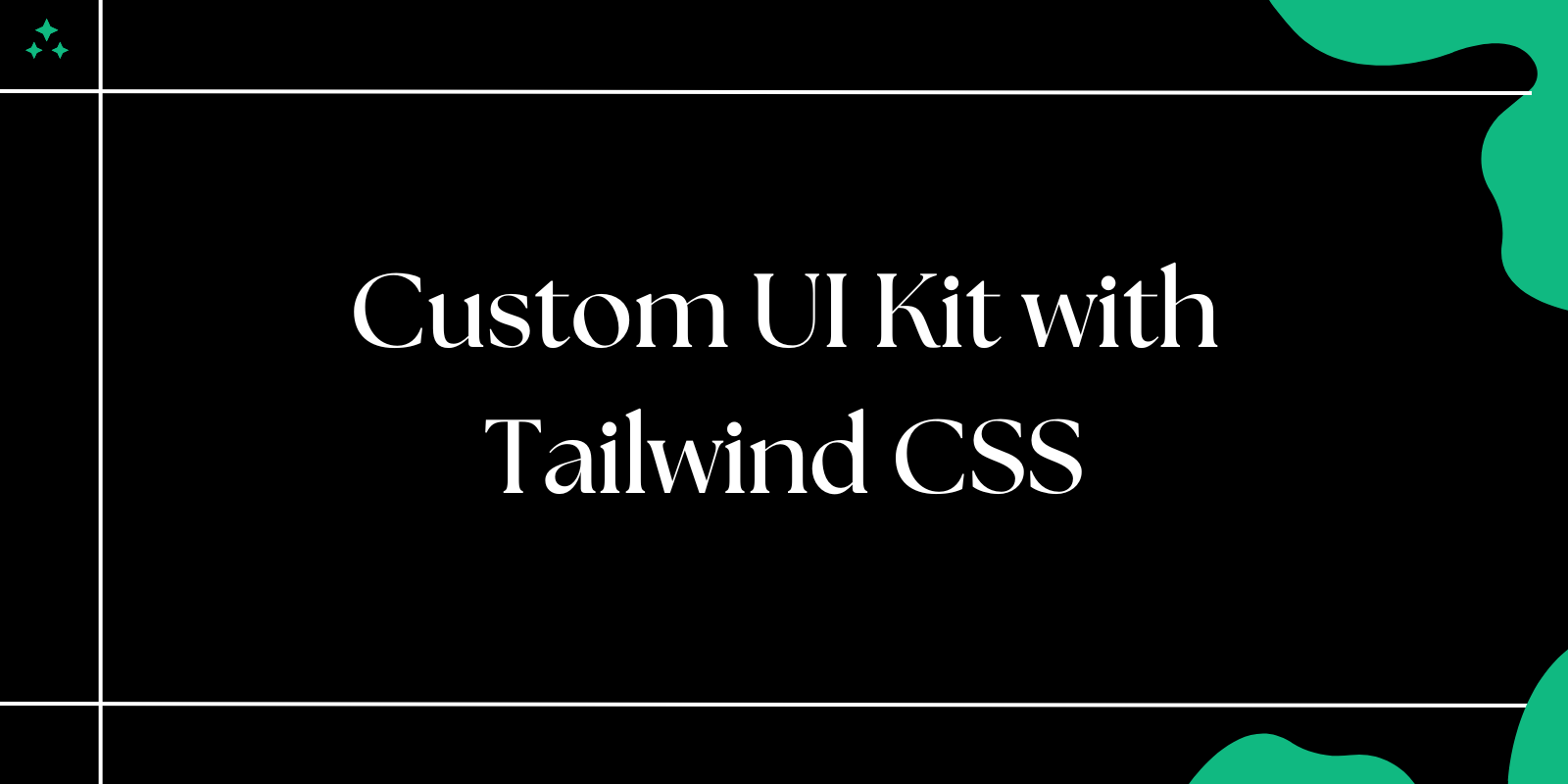Introduction
Images are a critical part of web design, but delivering high-quality images to devices of different sizes and resolutions can be tricky. The challenge lies in balancing visual quality with performance considerations across the diverse ecosystem of devices accessing your website. By leveraging HTML's srcset and <picture> tags, you can ensure your website is optimized for performance while providing the best visual experience.
In this comprehensive guide, we'll explore how to use these powerful tools to implement responsive images, cover advanced implementation techniques, and provide practical examples that you can apply immediately to your web projects. We'll also discuss image optimization strategies, browser compatibility considerations, and common pitfalls to avoid when working with responsive images.
Why Responsive Images?
Using responsive images ensures:
- Optimized Performance: Smaller images for mobile devices reduce loading times and bandwidth consumption. This is particularly important for users on limited data plans or in areas with slow network connectivity.
- Improved UX: High-quality images on high-resolution screens enhance user experience by providing crisp visuals without pixelation on devices with high pixel density (like Retina displays).
- SEO Benefits: Faster-loading pages improve search engine rankings as page speed is a significant ranking factor for search engines like Google.
- Reduced Bounce Rates: Users are more likely to stay on pages that load quickly and display properly on their devices.
- Better Accessibility: Properly implemented responsive images can improve accessibility by ensuring content is appropriately sized for all users.
- Device-Appropriate Content: Serve different image crops or art directions based on screen size and orientation.
Impact on Web Performance
| Metric | With Responsive Images | Without Responsive Images |
|---|---|---|
| Page Load Time | 1-3s (depending on connection) | 5-10s+ on mobile devices |
| Data Transfer | 30-60% reduction | Full-sized images always |
| Time to Interactive | Faster | Delayed by large image downloads |
| Lighthouse Score | Improved by 10-20 points | Penalized for oversized images |
| Core Web Vitals | Better LCP performance | Poor LCP performance |
The srcset Attribute
The srcset attribute in the <img> tag lets you specify multiple image sources for different screen resolutions and viewport sizes. The browser then decides which image to download based on the current viewing context.
Basic Syntax
<img
src="images/default.jpg"
srcset="images/small.jpg 480w, images/medium.jpg 800w, images/large.jpg 1200w"
sizes="(max-width: 600px) 100vw, 50vw"
alt="Responsive example"
/>
Detailed Explanation:
**srcset**: Defines a list of image sources with their intrinsic widths (e.g.,480wmeans the image is 480 pixels wide). The browser uses this information to select the most appropriate image.**sizes**: Specifies the displayed image size for different screen widths:(max-width: 600px) 100vw: On screens up to 600px wide, the image will occupy 100% of the viewport width50vw: On larger screens, the image will occupy 50% of the viewport width
**src**: Provides a fallback image if the browser doesn't supportsrcsetor while the browser is deciding which image to load.
Advanced srcset Usage with Pixel Density Descriptors
For high-resolution displays (like Retina), you can use pixel density descriptors instead of width descriptors:
<img
src="images/photo.jpg"
srcset="images/photo.jpg 1x, images/photo@2x.jpg 2x, images/photo@3x.jpg 3x"
alt="Responsive image with pixel density descriptors"
/>
In this example:
1x: Standard display (96 DPI)2x: High-density display (like Retina - 192 DPI)3x: Ultra-high-density display (newer mobile devices - 288 DPI)
Performance Considerations
// JavaScript snippet to preload the most likely image based on screen size
document.addEventListener('DOMContentLoaded', () => {
const screenWidth = window.innerWidth;
let imageToPreload;
if (screenWidth < 600) {
imageToPreload = 'images/small.jpg';
} else if (screenWidth < 1000) {
imageToPreload = 'images/medium.jpg';
} else {
imageToPreload = 'images/large.jpg';
}
const preloadLink = document.createElement('link');
preloadLink.rel = 'preload';
preloadLink.as = 'image';
preloadLink.href = imageToPreload;
document.head.appendChild(preloadLink);
});
Using the <picture> Element
The <picture> tag provides even greater control over responsive images by allowing conditional image rendering based on media queries. It's particularly useful when you need to change image aspect ratios or formats for different devices.
Basic Example:
<picture>
<source srcset="image-small.jpg" media="(max-width: 600px)">
<source srcset="image-medium.jpg" media="(max-width: 1200px)">
<source srcset="image-large.jpg">
<img src="default.jpg" alt="Example of a responsive image">
</picture>
How It Works:
**<source>**: Defines different images for specific media conditions. The browser evaluates each<source>element and uses the first one that matches.**media**: Contains a media query that determines when to use the image source.**<img>**: Acts as a fallback image for browsers that don't support the<picture>element. This element is required inside the picture element.
Advanced <picture> Usage with Image Formats
You can use the <picture> element to serve different image formats based on browser support:
<picture>
<source srcset="image.webp" type="image/webp">
<source srcset="image.avif" type="image/avif">
<source srcset="image.jpg" type="image/jpeg">
<img src="image.jpg" alt="Image with format selection">
</picture>
This example tries to serve the image in WebP or AVIF format first (which have better compression), falling back to JPEG for browsers without WebP/AVIF support.
Combining Format and Responsive Features
<picture>
<!-- WebP sources -->
<source
type="image/webp"
srcset="images/photo-small.webp 480w, images/photo-medium.webp 800w, images/photo-large.webp 1200w"
sizes="(max-width: 600px) 100vw, (max-width: 1200px) 50vw, 33vw">
<!-- JPEG sources -->
<source
type="image/jpeg"
srcset="images/photo-small.jpg 480w, images/photo-medium.jpg 800w, images/photo-large.jpg 1200w"
sizes="(max-width: 600px) 100vw, (max-width: 1200px) 50vw, 33vw">
<!-- Fallback -->
<img src="images/photo-medium.jpg" alt="Responsive image with format options">
</picture>
This complex example uses both format selection and responsive sizing to deliver the optimal image in terms of both format and dimensions.
Choosing Between srcset and <picture>
| Feature | srcset Attribute | <picture> Element |
|---|---|---|
| Use Case | Different image resolutions | Different image formats, crops, or art direction |
| Complexity | Simpler implementation | More complex but more powerful |
| Browser Decision | Browser chooses based on viewport and display density | Developer defines specific conditions |
| Format Switching | Not supported | Supported via type attribute |
| Art Direction | Not supported | Supported via media queries |
| Fallback | Via src attribute | Via nested <img> element |
| Browser Support | Very good (IE11+) | Very good (IE11+ with polyfill) |
Guidelines:
- Use
**srcset**for simple scenarios where you only need to serve different image sizes of the same content. - Use
**<picture>**when:- You need to switch image formats based on browser support
- You need different image crops or art direction for different screen sizes
- You need to provide different images based on device capabilities
Practical Example: Responsive Banner with Art Direction
Here's a real-world example of a responsive banner using the <picture> element with different crops for different devices:
<picture>
<!-- Mobile version (portrait crop) -->
<source
srcset="banner-mobile-400.jpg 400w, banner-mobile-600.jpg 600w"
media="(max-width: 600px)"
sizes="100vw">
<!-- Tablet version (square crop) -->
<source
srcset="banner-tablet-800.jpg 800w, banner-tablet-1000.jpg 1000w"
media="(max-width: 1200px)"
sizes="80vw">
<!-- Desktop version (widescreen crop) -->
<source
srcset="banner-desktop-1200.jpg 1200w, banner-desktop-1800.jpg 1800w, banner-desktop-2400.jpg 2400w"
sizes="60vw">
<!-- Fallback -->
<img
src="banner-desktop-1200.jpg"
alt="Seasonal promotion banner showing our latest products"
loading="lazy"
width="1200"
height="400">
</picture>
CSS Enhancement:
/* Base styles */
img, picture {
max-width: 100%;
height: auto;
display: block;
}
/* Prevent layout shift with aspect ratio box */
.banner-container {
position: relative;
width: 100%;
height: 0;
padding-bottom: 33.33%; /* For 3:1 aspect ratio */
overflow: hidden;
}
/* For mobile portrait banners */
@media (max-width: 600px) {
.banner-container {
padding-bottom: 150%; /* For 2:3 aspect ratio */
}
}
/* For tablet square banners */
@media (max-width: 1200px) {
.banner-container {
padding-bottom: 100%; /* For 1:1 aspect ratio */
}
}
/* Position the image within the container */
.banner-container img,
.banner-container picture {
position: absolute;
top: 0;
left: 0;
width: 100%;
height: 100%;
object-fit: cover;
}
Implementation Best Practices
Image Preparation Workflow
- Create image variants:
# Using Sharp in Node.js const sharp = require('sharp'); // Create resized versions sharp('original.jpg') .resize(480) .toFile('small.jpg'); sharp('original.jpg') .resize(800) .toFile('medium.jpg'); sharp('original.jpg') .resize(1200) .toFile('large.jpg'); // Create WebP versions sharp('original.jpg') .resize(480) .webp() .toFile('small.webp'); - Calculate appropriate sizes:
// Calculate appropriate image sizes based on design breakpoints const breakpoints = [320, 480, 768, 1024, 1440, 1920]; const imageWidths = breakpoints.map(bp => { // If image takes up half the screen at this breakpoint return Math.round(bp * 0.5); }); // Account for 2x screens const retinaWidths = imageWidths.map(width => width * 2); // Combine and remove duplicates const allWidths = [...new Set([...imageWidths, ...retinaWidths])].sort((a, b) => a - b); console.log('Generate these image widths:', allWidths); - Generate optimal formats for each variant (JPEG/PNG/WebP/AVIF)
Preventing Layout Shift
To prevent Cumulative Layout Shift (CLS), always specify dimensions:
<img
src="photo.jpg"
srcset="photo-small.jpg 400w, photo-medium.jpg 800w, photo-large.jpg 1200w"
sizes="(max-width: 600px) 100vw, 50vw"
alt="Responsive example"
width="800"
height="600"
loading="lazy"
/>
Note: The
widthandheightattributes don't constrain the image size in modern browsers; they provide the aspect ratio information to help the browser allocate space before the image loads.
Lazy Loading
Modern browsers support native lazy loading which defers loading offscreen images:
<img src="image.jpg" loading="lazy" alt="Lazy-loaded image">
For more control, you can implement Intersection Observer:
document.addEventListener('DOMContentLoaded', () => {
const lazyImages = document.querySelectorAll('.lazy-image');
const imageObserver = new IntersectionObserver((entries, observer) => {
entries.forEach(entry => {
if (entry.isIntersecting) {
const img = entry.target;
const src = img.dataset.src;
const srcset = img.dataset.srcset;
if (srcset) img.srcset = srcset;
if (src) img.src = src;
img.classList.remove('lazy-image');
observer.unobserve(img);
}
});
});
lazyImages.forEach(img => imageObserver.observe(img));
});
Testing Responsive Images
Browser Developer Tools
- Chrome DevTools:
- Open DevTools (F12)
- Go to Network tab and filter by "Img"
- Enable the Device Mode (Ctrl+Shift+M)
- Resize the viewport and observe which images are loaded
- Check "Disable cache" to test different scenarios
- Firefox Responsive Design Mode:
- Open Developer Tools (F12)
- Click on the Responsive Design Mode icon
- Test different device presets and observe network requests
Performance Testing Tools
// Performance measurement snippet
window.addEventListener('load', () => {
// Get all images on the page
const images = document.querySelectorAll('img');
// Calculate total image download size
let totalBytes = 0;
// Analyze each image
performance.getEntriesByType('resource').forEach(resource => {
if (resource.initiatorType === 'img') {
console.log(`Image: ${resource.name}`);
console.log(`Size: ${Math.round(resource.transferSize / 1024)}KB`);
console.log(`Load Time: ${Math.round(resource.duration)}ms`);
totalBytes += resource.transferSize;
}
});
console.log(`Total image size: ${Math.round(totalBytes / 1024)}KB`);
});
Comprehensive Testing Strategy
| Testing Method | What to Test | Tools |
|---|---|---|
| Browser Testing | Visual appearance, loading behavior | Chrome, Firefox, Safari, Edge |
| Network Throttling | Performance on slow connections | DevTools Network tab with throttling |
| Device Testing | Different screen sizes and DPRs | Real devices, BrowserStack, DevTools |
| Automated Testing | Image load times, sizes | Lighthouse, WebPageTest |
| A/B Testing | User engagement metrics | Google Analytics, custom solutions |
Accessibility Considerations
- Descriptive Alt Text: Always provide detailed
altattributes that describe the image content and purpose:
<!-- Poor alt text -->
<img src="chart.jpg" alt="Chart">
<!-- Better alt text -->
<img src="q2-sales-chart.jpg" alt="Bar chart showing Q2 sales performance across regions with North America leading at 43% market share">
- Reduced Motion: Consider users who prefer reduced motion:
/* Provide alternative presentation for users with motion sensitivity */
@media (prefers-reduced-motion: reduce) {
.animated-banner picture img {
animation: none;
transition: none;
}
}
- Image Compression Quality: Ensure sufficient quality for users with visual impairments who may zoom in:
<picture>
<!-- Higher quality image for users who might need to zoom -->
<source
srcset="high-quality.jpg"
media="(prefers-reduced-data: no-preference)">
<!-- Standard compressed image -->
<source srcset="standard-quality.jpg">
<img src="standard-quality.jpg" alt="Detailed diagram of the process">
</picture>
Advanced Techniques
Automated Responsive Image System
Here's an example of integrating responsive images into a build system:
// Example Gulp task for generating responsive images
const gulp = require('gulp');
const responsive = require('gulp-responsive');
const rename = require('gulp-rename');
gulp.task('responsive-images', function() {
return gulp.src('src/images/**/*.{jpg,png}')
.pipe(responsive({
'**/*': [{
width: 400,
rename: { suffix: '-small' },
}, {
width: 800,
rename: { suffix: '-medium' },
}, {
width: 1200,
rename: { suffix: '-large' },
}, {
// Convert to WebP format as well
width: 400,
rename: { suffix: '-small', extname: '.webp' },
}, {
width: 800,
rename: { suffix: '-medium', extname: '.webp' },
}, {
width: 1200,
rename: { suffix: '-large', extname: '.webp' },
}],
}, {
quality: 80,
progressive: true,
withMetadata: false,
}))
.pipe(gulp.dest('dist/images'));
});
Dynamic Content Management Integration
For content managed in a CMS:
<?php
// Example PHP function for generating responsive image markup from a CMS
function get_responsive_image($image_id, $sizes = '100vw', $lazy = true) {
// Get image metadata from database
$image = get_image_by_id($image_id);
// Get all generated sizes
$small = $image['derivatives']['small'];
$medium = $image['derivatives']['medium'];
$large = $image['derivatives']['large'];
// Build srcset attribute
$srcset = "{$small['url']} {$small['width']}w, {$medium['url']} {$medium['width']}w, {$large['url']} {$large['width']}w";
// Build the markup
$html = "<img ";
$html .= "src=\"{$medium['url']}\" ";
$html .= "srcset=\"{$srcset}\" ";
$html .= "sizes=\"{$sizes}\" ";
$html .= "width=\"{$medium['width']}\" ";
$html .= "height=\"{$medium['height']}\" ";
$html .= "alt=\"{$image['alt']}\" ";
if ($lazy) {
$html .= "loading=\"lazy\" ";
}
$html .= ">";
return $html;
}
?>
Common Pitfalls and Solutions
Problem: Serving overly large images to mobile devices
Solution: Ensure your smallest image variant is appropriate for mobile:
<img
src="default-medium.jpg"
srcset="image-small.jpg 400w, image-medium.jpg 800w, image-large.jpg 1600w"
sizes="(max-width: 600px) 100vw, (max-width: 1200px) 50vw, 33vw"
alt="Responsive image"
/>
Problem: Images causing layout shift
Solution: Always include width and height attributes and consider using aspect ratio boxes:
.image-container {
position: relative;
width: 100%;
padding-top: 56.25%; /* 16:9 Aspect Ratio */
}
.image-container img {
position: absolute;
top: 0;
left: 0;
width: 100%;
height: 100%;
object-fit: cover;
}
Problem: Not considering different display densities
Solution: Include density descriptors for high-DPR screens:
<img
src="photo.jpg"
srcset="photo.jpg 1x, photo@2x.jpg 2x, photo@3x.jpg 3x"
alt="High-resolution photo"
/>
Conclusion
Responsive images are a vital part of modern web design. By using the srcset attribute and <picture> element, you can ensure your images look great and load efficiently on any device. The techniques covered in this guide give you the tools to implement a comprehensive responsive image strategy that balances performance with visual quality.
When implementing responsive images, remember these key points:
- Always consider the balance between quality and performance
- Test your implementation across multiple devices and network conditions
- Use appropriate tooling to automate the creation of image variants
- Be mindful of accessibility requirements
- Monitor and adjust your strategy based on real-world usage data
Start incorporating these techniques into your projects to enhance user experience and site performance across the increasingly diverse landscape of web-enabled devices.
Happy coding!



